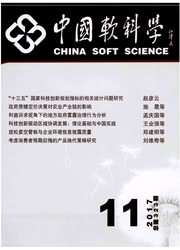

 中文摘要:
中文摘要:
本文采用一般函数形式,使用还原性模型分析方法,研究了"新机制"改革中不同地区的财政行为选择。研究结果表明,这次改革在某些地区确实取得了显著成效,提高了教育财政投入水平,但在各地也普遍产生了挤出效应。另外,这种挤出效应以及由此所决定的改革成效还存在着明显的地区差别,经济落后地区反而更加倾向于增加教育财政投入。由此,本文使用县级财政收支数据,通过DDD方法来剥离经济增长以及其它政策和非政策因素的影响,从经验事实上进一步验证了这次改革的地区成效差别。
 英文摘要:
英文摘要:
With the reductive analysis model,the paper studies the financial behavior of local government in our country in the New-mechanism reform. The result shows that some progress was made after New-mechanism reform,but there are crowding-out effect everywhere too. On the other hand,because of regional characteristics,the crowding-out effect is different between regions. Some regions invest more public capital in economic facilities,and underdeveloped country incline to invest in education and gain good performance. Base on the county’s financial balance data of western-rural area,the financial expenditure has been adjusted through DDD to correct for economic growth,other policy,and regional characteristics,and so the different effect of the reform was confirmed.
 同期刊论文项目
同期刊论文项目
 同项目期刊论文
同项目期刊论文
 期刊信息
期刊信息
